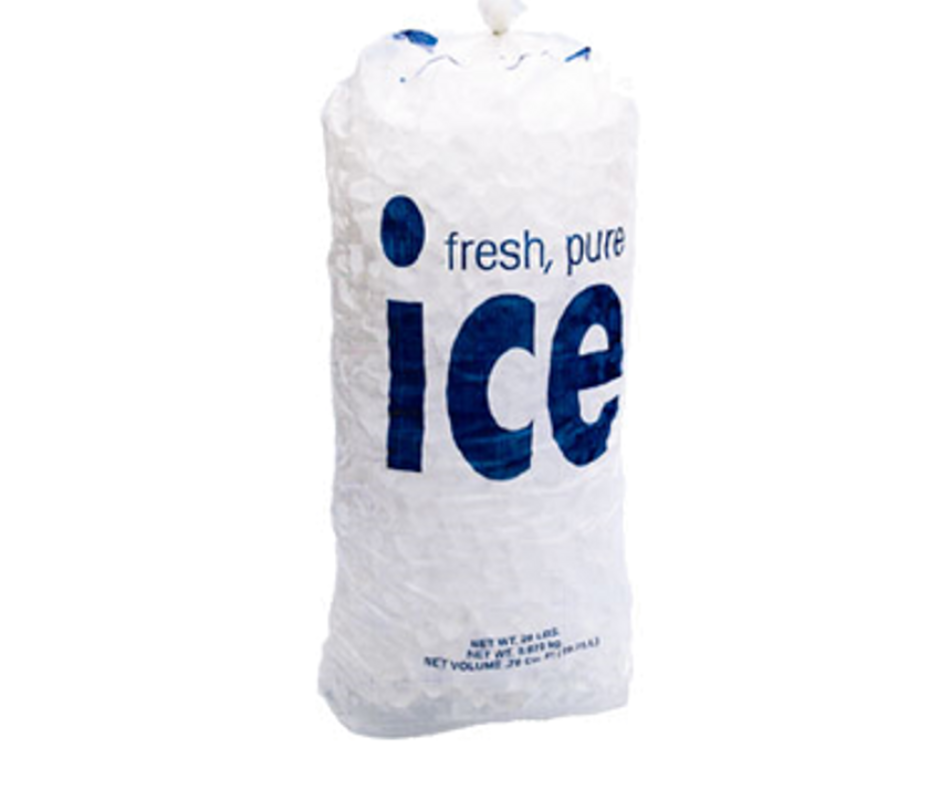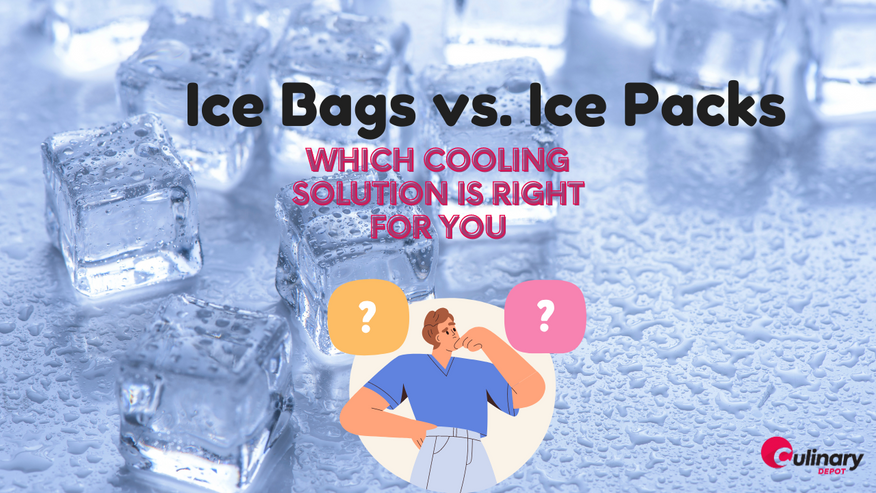Aug 7th 2023 - Team Member
Ice Bags vs. Ice Packs: Which Cooling Solution is Right for You
When it comes to managing pain, and injuries, or even keeping items cold in a commercial kitchen, having the right cooling solution can make all the difference. In this comprehensive guide, we will explore the merits of two popular choices: traditional Ice Bags and modern Ice Packs. Whether you're a seasoned professional or just getting started in the commercial kitchen industry, understanding the nuances of these cooling options will empower you to make the best choice for your specific needs.
Purpose and Use Cases

Ice bags, the stalwarts of cooling solutions, have been relied upon for decades. These pliable containers are designed to hold ice cubes or crushed ice, making them versatile for a range of applications. They have found their place in both medical settings and culinary environments, providing a simple and accessible cooling solution.
On the other hand, ice packs represent a modern evolution in cooling technology. These pre-filled gel packs are engineered to maintain a frozen state for extended periods. Ice packs are favored for their convenience and ability to retain cold temperatures, making them invaluable in scenarios where a consistent and longer-lasting cooling effect is required.
Cooling Efficiency
Ice bags excel in their ability to conform to the shape of the body or items they are applied to. This flexibility ensures better contact and coverage, maximizing the cooling effect. However, as the ice melts, condensation and leakage can be concerns.

Ice packs boast superior cooling efficiency in terms of duration and temperature retention. Their gel-filled design allows for a gradual release of cold, providing a sustained cooling effect over time. This makes them ideal for situations where continuous cooling is vital, such as minimizing inflammation in a busy kitchen.
Convenience and Portability
While ice bags are easily molded to fit various shapes, their convenience diminishes as the ice melts and they become less effective. Moreover, the potential for leaks and drips can create messes that are less than ideal in a bustling commercial kitchen setting.
Ice packs shine in terms of convenience and portability. These self-contained units eliminate the need for messy ice cubes or bags, ensuring a hassle-free experience. Their compact design makes them easy to store and transport, making them a preferred choice for culinary professionals on the go.
Medical Considerations
In medical contexts, ice bags have been used to address injuries like sprains and strains. Their flexibility and customizable fit allow for targeted relief. However, caution is needed to prevent prolonged exposure to extreme cold, which could potentially cause frostbite.
Ice packs are often recommended by healthcare professionals for their controlled and consistent cooling. They can be safely applied to manage pain and swelling, with less risk of frostbite due to their gradual cooling properties.
Safety and Hygiene

Using both ice bags and ice packs requires attention to safety and hygiene:
Regular cleaning and proper sealing are crucial to prevent contamination and leaks. Additionally, managing condensation buildup is essential to maintain a clean and safe workspace.
Ice packs, with their sealed gel compartments, offer a more hygienic solution. They require minimal maintenance and are less prone to leakage, ensuring a sanitary environment in the kitchen.
Environmental Impact

Ice bags, often made of single-use plastics, contribute to environmental concerns. Their disposable nature raises questions about sustainability and waste reduction.
Ice packs, especially reusable options, present a more environmentally friendly choice. By opting for gel packs that can be used repeatedly, you contribute to a greener approach in your kitchen operations.
Cost Considerations

The cost of ice bags may seem lower initially, but recurring purchases can add up over time. Factor in the ongoing expense of ice production and potential replacements due to wear and tear.
While ice packs may have a slightly higher upfront cost, their reusability and longer lifespan can make them a cost-effective investment in the long run. Additionally, the convenience they offer can lead to increased operational efficiency.
User Preferences and Situational Analysis
The choice between ice bags and ice packs ultimately depends on your unique needs and circumstances. Consider the nature of your tasks, the frequency of use, and your specific cooling requirements to determine which solution aligns best with your goals.
In conclusion, both ice bags and ice packs offer valuable cooling solutions in the commercial kitchen industry. Ice bags provide versatility and familiarity, while ice packs bring modern convenience and prolonged cooling. By understanding the benefits and limitations of each option, you can make an informed decision that enhances your efficiency, comfort, and overall kitchen experience.
Remember, whether you're dishing out culinary creations or tending to the needs of a bustling kitchen, the right cooling solution can be the secret ingredient that keeps everything running smoothly.

